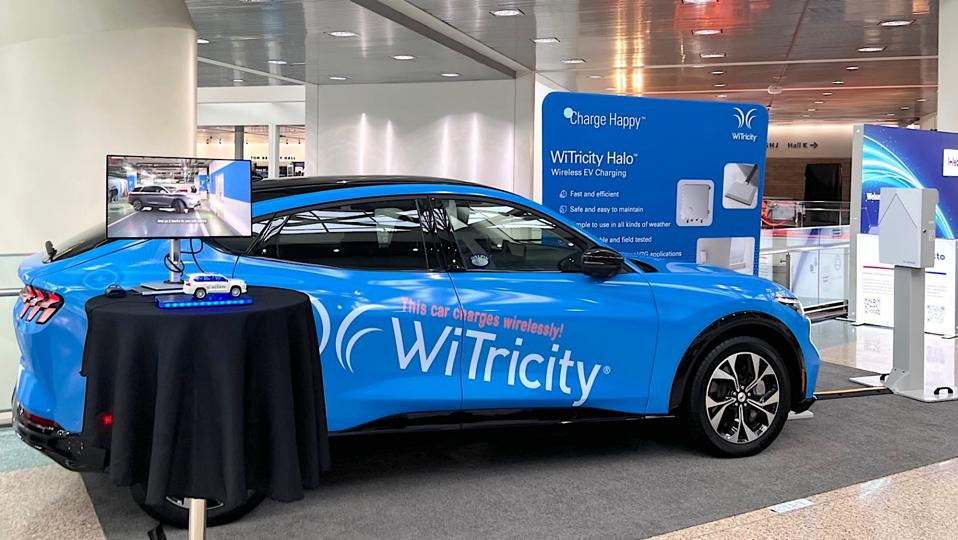In a world where convenience is king, the advent of wireless EV charging is set to redefine how we think about electric vehicle infrastructure. Imagine driving into a parking spot and having your car charge automatically, without the hassle of plugging in. This isn’t just a futuristic vision; it’s happening now. According to Bloomberg Green, by 2025, the global wireless EV charging market is expected to grow at an unprecedented rate, revolutionizing urban landscapes and making EVs more accessible than ever. In this article, you’ll learn how wireless EV charging works, its impact on urban infrastructure, and what to expect as this technology becomes mainstream.
The Mechanics of Wireless EV Charging
What is Wireless EV Charging?
Wireless EV charging, also known as inductive charging, uses electromagnetic fields to transfer energy between a charging pad on the ground and a receiver on the vehicle. Unlike conventional plug-in chargers, this system requires no cables, making it a seamless experience for EV owners.
How Does It Work?
- Installation: Charging pads are installed in parking spaces, garages, or even roads.
- Energy Transfer: When an EV equipped with a compatible receiver parks over the pad, energy is transferred via electromagnetic induction.
- Efficiency: Recent advancements have pushed efficiency rates to over 90%, comparable to traditional plug-in chargers, according to a report by CleanTechnica.
Key Players and Technologies
Major brands like Tesla and Hyundai are pioneering wireless charging technology. Tesla’s ongoing research promises to integrate wireless charging into its future models, while Hyundai has already begun trials in South Korea. Companies like WiTricity are at the forefront, providing the backbone technology that makes wireless charging viable.
Transforming Urban Infrastructure
Reducing Urban Clutter
Wireless EV charging can significantly reduce urban clutter. In cities like Oslo, where EV adoption is high, charging cables often clutter sidewalks and streets. Wireless solutions eliminate these obstacles, leading to more aesthetically pleasing cityscapes.
Improving Accessibility and Convenience
- Public Transport: Integrating wireless charging into public transport hubs can streamline operations. For example, buses equipped with this technology can charge while waiting at stops.
- Residential Areas: Implementing this technology in residential zones can solve the challenge of limited charging infrastructure for apartment dwellers.
Economic and Environmental Impact
- Cost Efficiency: Although initial installation costs are higher, the reduction in maintenance and increased user convenience contribute to long-term savings.
- Environmental Benefits: By promoting wider EV adoption, wireless charging can play a crucial role in reducing urban pollution levels.
Practical Guide to Wireless EV Charging Adoption
How to Charge Wirelessly
- Check Compatibility: Ensure your EV model supports wireless charging technology. Most new models from leading brands like Nissan and Ford EV are beginning to offer this feature.
- Locate Charging Spots: Cities like London and Los Angeles are early adopters, with plans to expand infrastructure rapidly.
- Use Apps: Leverage apps like PlugShare to find available wireless charging spots in your area.
Where to Buy Wireless Charging Systems
For those interested in home installations, companies like Plugless Power offer DIY wireless charging systems. These can be purchased online and installed by certified professionals.
What to Compare
When considering a wireless charging system, compare:
- Efficiency: Look for systems with at least 90% efficiency.
- Cost: Initial cost versus long-term savings.
- Installation: Professional versus DIY options.
- Brand Reliability: Choose reputable brands known for quality and innovation.
The Future of Wireless EV Charging
As urban areas continue to grow, the need for efficient and accessible EV charging infrastructure becomes critical. The International Energy Agency (IEA) forecasts that, by 2040, over 70% of all vehicles sold will be electric. Wireless EV charging is not just a novel luxury but a necessary evolution in sustainable urban planning. With continued advancements, we can expect even faster charging times, greater accessibility, and more widespread adoption in the coming years.
Conclusion: Embrace the Revolution
Wireless EV charging is more than just a technological advancement; it’s a revolution in urban infrastructure. By reducing clutter, enhancing convenience, and promoting environmental sustainability, it’s paving the way for a cleaner, more efficient future. Are you ready to embrace the wireless revolution? As cities worldwide continue to adopt this technology, the day when every parking spot is a charging station is not far off. Keep an eye on this space, and consider how you can integrate wireless charging into your EV lifestyle today.
In a rapidly evolving world, staying ahead means embracing innovation. Wireless EV charging is here, and it’s shaping the cities of tomorrow. Share your thoughts below on how you think this technology will transform urban life!

